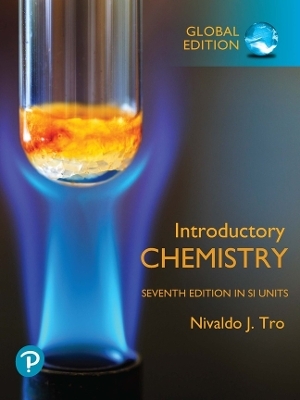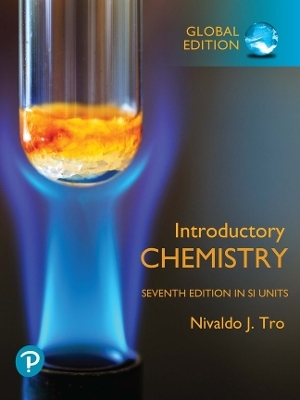
Modeling of Process Intensification
Wiley-VCH Verlag GmbH (Hersteller)
978-3-527-61060-0 (ISBN)
- Keine Verlagsinformationen verfügbar
- Artikel merken
Combining the knowledge involved in process engineering and process modeling, this is the first book to cover all modeling methods applicable to process intensification. Both the editors and authors are renowned experts from industry and academia in the various fields of process modeling and integrated chemical processes. Following an introduction to the topic, the book goes on to look at equipment and operational methods, monolithic catalysis, HEX, micro and reverse flow reactors, catalytic and reactive distillation, the simulated moving bed and vibration bubble column as well as ultrasound and ultrasonic reactors. A final chapter is devoted to processes under supercritical conditions. In its treatment of hot topics of multidisciplinary interest, this book is of great value to researchers and engineers alike.
The holder of an honorary doctorate from the University of Chemical Technology and Metallurgy in Sofia, Bulgaria, Frerich J. Keil gained his PhD under Reinhart Ahlrichs at the Karlsruhe University of Technology in 1976, with a thesis dealing with quantum chemical approaches for chemical reactions and NMR spectra. Between 1977 and 1989 he was employed at UHDE GmbH in Dortmund, working on process development of coal gasification, heavy water, methanol synthesis, and ammonia synthesis. Since 1989 he has been at the Hamburg University of Technology, where he is Professor of Chemical Reaction Engineering. His research interests are diffusion /reaction phenomena in catalysis, process modeling, and molecular modeling. Professor Keil is the co editor of several international journals and some books, has published around 150 research articles, and is the author of a book on diffusion in catalysis.
Preface. List of Contributors. 1 Modeling of Process Intensifi cation An Introduction and Overview (Frerich J. Keil). 2 Process Intensifi cation An Industrial Point of View (Robert Franke). 2.1 Introduction. 2.1.1 Remarks on the Term Process Intensification. 2.1.2 Management Aspects. 2.2 Microreaction Technology. 2.2.1 Principal Features. 2.2.2 Catalytic Wall Reactors. 2.3 Simulation. 2.3.1 Introduction. 2.3.2 Molecular Simulations. 2.3.2.1 Quantum chemical Calculations. 2.3.2.2 COSMO RS Calculations. 2.3.2.3 Molecular dynamics Calculations. 2.3.3 Monte Carlo Simulations in Project Valuation under Risk. 3 Modeling and Simulation of Microreactors (Steffen Hardt). 3.1 Introduction. 3.2 Flow Distributions. 3.2.1 Straight Microchannels. 3.2.2 Periodic and Curved Channel Geometries. 3.2.3 Multichannel Flow Domains. 3.3 Heat Transfer. 3.3.1 Straight Microchannels. 3.3.2 Periodic and Curved Channel Geometries. 3.3.3 Multichannel Flow Domains. 3.3.4 Micro Heat Exchangers. 3.4 Mass Transfer and Mixing. 3.4.1 Simple Mixing Channels. 3.4.2 Chaotic Micromixers. 3.4.3 Multilamination Micromixers. 3.4.4 Hydrodynamic Dispersion. 3.5 Chemical Kinetics. 3.5.1 Numerical Methods for Reacting Flows. 3.5.2 Reacting Channel Flows. 3.5.3 Heat exchanger Reactors. 3.6 Conclusions and Outlook. 4 Modeling and Simulation of Unsteady state operated Trickle flow Reactors (Rudiger Lange). 4.1 Introduction. 4.2 Modeling. 4.3 Reactor Model. 4.4 Simulation. 4.5 Conclusion. 5 Packed bed Membrane Reactors (Akos Tota, Dzmitry Hlushkou, Evangelos Tsotsas, and Andreas Seidel Morgenstern). 5.1 Introduction. 5.1.1 The PBMR Principle. 5.1.2 Case Study. 5.1.3 Porous Membranes. 5.1.4 Outline. 5.2 One dimensional Modeling of Packed bed Membrane Reactors. 5.2.1 One dimensional Pseudohomogeneous Model. 5.2.2 Cofeed (FBR) vs. Distributed Dosing of Reactants (PBMR) Nonreactive Conditions. 5.2.3 Comparison between FBR and PBMR Reactive Conditions. 5.2.4 Nonisothermal Operation. 5.3 Two dimensional Modeling of Packed bed Membrane Reactors. 5.3.1 Two dimensional Model of PBMR The Momentum balance Equation. 5.3.2 Two dimensional Model of PBMR The Mass balance Equation. 5.3.3 Two dimensional Model of PBMR The Energy balance Equation. 5.3.4 Boundary Conditions. 5.3.5 Numerical Solution of the Two dimensional Model. 5.3.6 Velocity Field in a Packed bed Membrane Reactor. 5.3.7 The Influence of Membrane Permeability on the Boundary Conditions. 5.3.8 Effect of Porosity Profile. 5.3.9 Effect of Radial Mass transport Limitations. 5.3.10 Comparison of the l(r) and aw model Concepts Temperature Profiles in a PBMR. 5.4 Three dimensional Modeling of a Packed bed Membrane Reactor. 5.4.1 Introduction to the Large scale Simulation Methods in Fluid Mechanics and Mass Transport. 5.4.2 Pressure and Velocity Field (Varying the Flow Distribution) Comparison between FBR and PBMR. 5.4.3 Advective diffusive Mass Transport in PBMR. 5.5 Summary and Conclusion. 6 The Focused Action of Surface Tension versus the Brute Force of Turbulence Scaleable Microchannel based Process Intensification using Monoliths (Michiel T. Kreutzer, Annelies van Diepen, Freek Kapteijn, and Jacob A. Moulijn). 6.1 Introduction. 6.2 Monoliths A Scalable Microchannel Technology. 6.3 Power Required for Gas Liquid Dispersion. 6.3.1 Turbulent Contactors. 6.3.2 Laminar Contactors. 6.4 Physical Adsorption of Oxygen. 6.5 Three phase Processes. 6.6 Discussion. 6.6.1 Design Considerations for Intensified Monolith Processes. 6.7 Conclusions. 7 Chemical Reaction Modeling in Supercritical Fluids in Special Consideration of Reactions in Supercritical Water (Andrea Kruse and Eckhard Dinjus). 7.1 Introduction. 7.2 Properties of Supercritical Fluids. 7.3 The C C bond Splitting of Tert. butylbenzene. 7.3.1 Experimental. 7.3.2 Modeling. 7.4 Total Oxidation in Supercritical Fluids. 7.4.1 Is Oxidation in CO2 the same as Oxidation in Water? 7.4.2 Experimental. 7.4.3 Modeling. 7.5 Glycerol Degradation. 7.5.1 Modeling. 7.6 Conclusion. 8 Ultrasound Reactors. 8.1 Some Fundamentals of Ultrasonics and the Design of High Energy Density Cravice Reactors (Christian Horst). 8.1.1 Introduction. 8.1.2 Bubble Behavior in Acoustic Fields. 8.1.2.1 Equations for the Motion of the Bubble Wall. 8.1.2.2 Cavitation Thresholds. 8.1.2.3 Influence of Parameters on Cavitation Behavior. 8.1.2.4 Cavitation near Solid Boundaries. 8.1.2.5 Finite Amplitude Waves and Shock Waves. 8.1.2.6 Streaming. 8.1.2.7 Bjerknes Forces. 8.1.2.8 Forces on Small Particles. 8.1.2.9 Sonochemical Effects. 8.1.3 Modeling of Sound Fields. 8.1.4 Examples of Sound Fields in Ultrasound Reactors. 8.1.4.1 High amplitude High Energy Density Conical Reactor. 8.1.4.2 Low amplitude High Energy Density Crevice Reactor. 8.1.5 Modeling of Sonochemical Effects in Ultrasound Reactors. 8.1.6 Summary. 8.2 Design of Cavitational Reactors (Parag R. Gogate and Aniruddha B. Pandit). 8.2.1 Introduction. 8.2.2 Theoretical Approach. 8.2.2.1 Identification of Stable or Transient Cavitation. 8.2.2.2 Effect of Compressibility of Medium. 8.2.2.3 Optimization of Operating Parameters. 8.2.2.4 Development of Design Equations. 8.2.3 Distribution of the Cavitational Activity in the Reactors. 8.2.4 Intensification of Cavitational Activity in the Sonochemical Reactors. 8.2.4.1 Use of Process intensifying Parameters. 8.2.4.2 Use of Combination of Cavitation and Advanced Oxidation Processes. 8.2.5 Design of a Pilot scale Reactor and its Experimental Evaluation. 8.2.5.1 Rational for the Design of a Reactor. 8.2.5.2 Actual Design of the Novel Reactor. 8.2.5.3 Comparison of the Efficacy of the Hexagonal Flow cell Reactor with Conventional Designs. 8.2.6 Hydrodynamic Cavitation Reactors. 8.2.6.1 Engineering Design of Hydrodynamic Cavitation Reactors. 8.2.7 Comparison of Cavitational Yields in Acoustic and Hydrodynamic Cavitation. 8.2.8 Qualitative Considerations for Reactor Choice, Scaleup and Optimization. 8.2.9 Efforts Needed in the Future. 8.2.10 Concluding Remarks. 9 Modeling of Simulated Moving bed Chromatography (Monika Johannsen). 9.1 Introduction. 9.2 From Elution Chromatography to Countercurrent Chromatography. 9.2.1 The TMB Process. 9.2.2 The SMB Process. 9.3 Applications of SMB Chromatography. 9.4 Modeling of Chromatographic Processes. 9.4.1 Modeling of Single column Chromatography. 9.4.1.1 Ideal Model. 9.4.1.2 Dispersive Model. 9.4.1.3 Equilibrium Dispersive Model. 9.4.1.4 Linear Driving Force (LDF) Model. 9.4.1.5 General Rate Model. 9.4.1.6 Initial and Boundary Conditions for Single column Chromatography. 9.4.2 Modeling of SMB Chromatography. 9.4.2.1 Model Classification. 9.4.2.2 Modeling of the TMB Process. 9.4.2.3 Modeling of the SMB Process. 9.4.2.4 Solution of the TMB Model with the Triangle Theory. 9.4.2.5 Consideration of Different Adsorption Coefficients in the Zones. 9.4.2.6 Modeling of Pressure Gradient in SFC. 9.4.3 Numerical Algorithms. 9.5 Simulations of SMB SFC Chromatography. 9.5.1 Separation of Cis/trans Isomers of Phytol. 9.5.2 Separation of Enantiomers of (R,S) Ibuprofen. 9.5.3 Separation of Tocopherols. 9.6 Conclusion. 10 Modeling of Reactive Distillation (Eugeny Y. Kenig and Andrzej Gorak). 10.1 Introduction. 10.2 Characteristics of Reactive Distillation. 10.2.1 Column Internals for Reactive Distillation. 10.3 Modeling Principles of Reactive Distillation. 10.3.1 General Aspects. 10.3.2 Equilibrium stage Model. 10.3.3 Rate based Approach. 10.3.3.1 Balance Equations. 10.3.3.2 Mass Transfer and Reaction Coupling in the Fluid Film. 10.3.3.3 Nonideal Flow Behavior in Catalytic Column Internals. 10.3.3.4 Dynamic Modeling. 10.4 Case Studies. 10.4.1 Methyl Acetate Synthesis. 10.4.1.1 Process Description. 10.4.1.2 Process Modeling. 10.4.1.3 Results and Discussion. 10.4.2 Methyl Tertiary Butyl Ether. 10.4.2.1 Process Description. 10.4.2.2 Process Modeling. 10.4.2.3 Results and Discussion. 10.4.3 Ethyl Acetate Synthesis. 10.4.3.1 Process Description. 10.4.3.2 Process Modeling. 10.4.3.3 Results and Discussion. 10.4.4 Dymethyl Carbonate Transesterification. 10.4.4.1 Process Description. 10.4.4.2 Process Modeling. 10.4.4.3 Results and Discussion. 10.5 Conclusions and Outlook. 11 Experimental and Theoretical Explorations of Weak and Strong gradient Magnetic Fields in Chemical Multiphase Processes (Faical Larachi). 11.1 Background. 11.1.1 Nonmagnetic Fluids. 11.1.2 Magnetic Fluids. 11.2 Nonmagnetic Fluids. 11.2.1 Principle. 11.2.2 Theory. 11.2.3 Experimental Results and Discussion. 11.3 Magnetic Fluids. 11.3.1 Principle. 11.3.2 Theory. 11.3.2.1 Local Description. 11.3.2.2 Upscaling. 11.3.2.3 Closure Problem. 11.3.2.4 Zero order Axisymmetric Volume average Model. 11.3.3 Results and Discussion. 11.4 Concluding Remarks. Index.
| Verlagsort | Weinheim |
|---|---|
| Sprache | englisch |
| Maße | 170 x 240 mm |
| Gewicht | 958 g |
| Themenwelt | Naturwissenschaften ► Chemie |
| ISBN-10 | 3-527-61060-X / 352761060X |
| ISBN-13 | 978-3-527-61060-0 / 9783527610600 |
| Zustand | Neuware |
| Haben Sie eine Frage zum Produkt? |
aus dem Bereich


